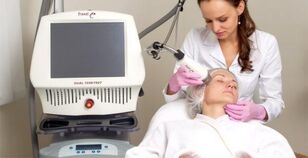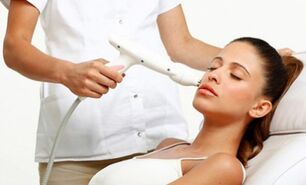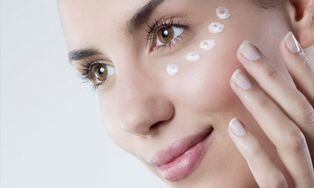Aging is a natural biological process that affects all tissues of the human body, including the appearance of a person. At the same time, facial tissues are more prone to aging than others, because they are constantly under the influence of environmental factors, chewing, facial and speech functions. Since the face is a kind of "business card" of a person, the issue of preserving and restoring the youth of the facial skin is especially relevant and topical. Of the many methods and techniques used today to address this problem, laser rejuvenation is especially noteworthy.
The essence of this method is the fractional effect of laser light on the skin. The laser beam is divided into many thin rays that affect the microscopic areas of the skin at a certain depth and evaporate them. The whole cells located between these regions stimulate the active production of collagen and elastin - the two main "building blocks" that are less formed in the human body with age. After this procedure, the skin tone improves, fine and medium wrinkles are corrected, bags under the eyes are removed, and the oval face is drawn. At the same time, the rehabilitation period is reduced to a minimum. Fractional laser rejuvenation can be used not only as an independent method, but also to improve the results of plastic surgery or laser resurfacing of the skin.

Laser used for fractional laser rejuvenation
For the first time in the world, in 2004, the American company Palomar Medical Technologies received a patent for the principle of fractional laser action. Fractional laser systems are currently offered by various types of laser technology companies. Laser systems from Palomar and Fraxel, Affirm laser from the famous American company Cynosure, GentleYAG laser from Candela and others are widely used. Since all of these approaches have a common principle of operation, the outcome of the procedure is largely determined by the professionalism of the specialist performing the procedure.Contraindications to laser rejuvenation procedure
Absolute contraindications to the procedure:
- Pregnancy, lactation.
- foci of inflammatory process in the affected area.
- Psoriasis and dermatoses.
- In the area affected by herpes infection.
- Chemical peel of the treatment area to be performed less than two weeks before the procedure.
- Oncological diseases.
- Systemic diseases of the blood, immune system, connective tissue.
- Diabetes mellitus, in the stage of decompensation.
- Severe forms of hypertension and coronary heart disease.
- Varicose veins in the field of procedure.
- The tendency to form keloid scars.
- Vitiligo family history.
Relative contraindications include active sun exposure in the last three weeks before the procedure, ie, a new sunburn, as well as superficial and middle peels in the treatment area less than three weeks after the procedure.
Advantages of fractional laser rejuvenation
With the help of the natural effect, skin damage is minimal, as a result of which the traces disappear after 3-4 days after the procedure.
The method allows you to treat many areas of the skin in one procedure, while maintaining and activating the regenerative resources of the skin, which provides rapid recovery and long-term growth of the positive effect.
The procedure does not require anesthesia, it can be performed on the neck, décolleté and around the eyes.
Adverse effects are rare. Possible complications include the temporary appearance of reddish-purple spots in the treatment area, mild and rapid itching, activation of herpes infection, changes in skin texture, including burns, peeling and peeling. Skin scars, hyper- and hypopigmentation in the area of the procedure are very rare, but can be permanent.
Full course of laser rejuvenation procedures
A fractional laser session lasts 20-40 minutes, depending on the nature of the problem and the area being treated. Repeated procedures are performed in 3-4 weeks. As a rule, a total of 3-4 sessions are required. The maximum positive result occurs within three months after the last procedure. It is recommended to hold technical sessions once every 10-14 months.

What to do after laser rejuvenation procedure
The slight burning sensation felt after the procedure disappears in 1-2 hours, and the redness and slight swelling may persist for 1-3 days. External agents (creams, ointments, sprays) containing dexpanthenol, such as Bepanthen, Panthenol, D-Panthenol, should be used during this period. After the listed symptoms disappear and before the next procedure, apply a cream with hyaluronic acid.
You can take a shower and wash on the day of the procedure, but it is better to wait in the sauna and pool. The foundation can be applied one day after the procedure.
It is necessary to use sunscreen with at least 30 protective factors, because now the skin's metabolism is activated and it becomes more sensitive to sunlight.
After the procedure, follow the recommendations of the specialist who performed the procedure. The choice of cosmetics, the frequency and duration of their use is determined separately and depends on the type of skin and its characteristics.
Fractional laser rejuvenation is a cosmetic procedure in which the skin is exposed to a laser array made of micro-rays. The purpose of this effect is to activate regeneration processes and collagenogenesis. This is a relatively new but already very popular technique. In other words, it is called fractional, fractional laser coating or photothermolysis.
Principles and types of fractional laser rejuvenation
How does a particle laser work? The micro-rays emitted by the device respond to heat, and "lazy" skin cells begin to function actively. They break up faster to repair the damaged area. Old cells that have stopped working are dying and giving way to young ones. Heating of the deeper layers of the skin is accompanied by partial denaturation of proteins, as well as the formation of new components of the extracellular matrix, including elastin and collagen.
Depending on the depth of impact, laser absolute and concealed rejuvenation are different. The first is superficial and similar to grinding. Laser treatment of the upper layers of the skin is accompanied by evaporation of moisture and damage to the epidermis. After healing, the skin becomes toned, its relief and color are smoothed. During non-ablative photothermolysis, the laser affects the deeper layers of the skin. In this case, no open wounds appear.
Each type of rejuvenation has its advantages and disadvantages. Thus, the effect of ablation laser surface restoration is observed after the first procedure. With this method, you can get rid of deep wrinkles and age spots, heat, stretch marks and scars. There is no risk of infection with non-absolute procedures and the rejuvenating effect is observed for several years. This type of photothermolysis is recommended for people under the age of 40, the first signs of aging: small wrinkles, decreased turgor.
Instructions for the procedure and contraindications
The photothermolysis procedure, if available, is worth contacting:
- Laziness, skin tremors.
- Thin and deep wrinkles, crow's feet.
- Pigmentation of any origin.
- Increased secretion of sebaceous glands.
- The pores are enlarged, close to acne.
- scars, stretches, post-heat spots.
- Vascular "stars" (rosacea).
- Color.
Contraindications to fractional laser rejuvenation:
- Allergies, psoriasis.
- Autoimmune diseases.
- Pregnancy and breastfeeding.
- Blood diseases.
- Skin infections, inflammation in the field of treatment.
- All chronic diseases in the stage of decompensation.
- Oncology.
- Rise in body temperature.
- diabetes.
- The tendency to form keloid scars.
- Epilepsy.
Features of laser rejuvenation
Preparation for the fractional photothermolysis procedure consists of refusing to go to the solarium and the beach for two weeks. So far, you can't clean your skin, you can't do chemical peels, you can't take sulfonamides, fluoroquinolones, tetracyclines. Three days before the procedure, they stop going to the pool, bath, sauna, and allegedly exposed to alcohol-containing cosmetics. To prevent complications, a cosmetologist may prescribe antiviral and antibacterial medications by this time. The procedure should be performed the day before without alcohol and smoking, avoid going to the gym.
Before laser treatment, the skin is cleansed of cosmetics and dirt. In general, the effect of the laser is felt as an unpleasant itching sensation, but sometimes pain relief may be required. In this case, the cosmetologist gives anesthesia to the prepared skin area. After the oil works, it treats the skin with a laser. The duration of the procedure depends on the size of the treatment area and lasts from a few minutes to an hour. Finally, the skin is soothed with a nourishing cream.
In the first days after the procedure, do not use alcohol-based products, compress the parts of the body that have undergone photothermolysis with compression sheets. It is recommended to avoid physical activity for a week, go to the pool, sauna or bath, and limit your time on the street. Moisturize the skin with a special cream three times a day. So for half a month. Exfoliation, use of cosmetics with retinol, salicylic acid is unpleasant. For two months you should use a cream with a sun protection factor of 35 or higher.
How many procedures are needed to achieve the result? What results can you expect?
The recovery period after laser fractional rejuvenation lasts from 3 to 7 days. The speed of recovery depends on the lifestyle. Alcohol, smoking, overactivity, unbalanced diet, insomnia and anxiety all slow down the recovery process.
In the first three days after the laser treatment, the skin may become red and slightly swollen. Anesthetics and cooling of the skin help to reduce discomfort. If the skin feels tight for a week, this is normal, then there are scaly areas. The side effects of the procedure can burn bronze, which goes away on its own after half a month.
After fractional photothermolysis, a stable result is obtained after 2-5 procedures. More precisely, the number of sessions can be determined by a cosmetologist only on the basis of preliminary data. The interval between procedures is 3-4 weeks. Fractional laser rejuvenation slows down the aging process: wrinkles disappear or disappear, turgor increases, the weight of pores decreases and the skin improves. This method is an effective tool in the fight against scars, pigmentation, post-heat, stretch marks.
Laser fractional rejuvenation is one of the most popular hardware cosmetic procedures. Its advantages include efficiency, short-term healing, and physiology. The result is visible after the first procedure and lasts up to three years. The method has a wide range. The depth of the laser effect can be selected.
Women of all ages want to see beautiful skin in the mirror, but not everyone is ready to go under the knife of a plastic surgeon.
In this case, fractional rejuvenation comes to the rescue with the help of a laser, which is one of the first in modern cosmetology in anti-aging procedures.
Types and methods of exposure
Abbot photothermolysis
There are two methods of photothermolysis, each of which is suitable for different situations. Choosing the right option in favor of the best option will help the cosmetologist to make the first appointment.
This method is suitable for rejuvenating skin that has just started natural aging.
With the help of a laser, the micro-wound network affects only the top layer of the epidermis, forcing it to recover in a short time.
The result appears as soon as the wounds heal after the first process.
Non-ablative photothermolysis
This method is a bit of a serious intervention. The laser beam penetrates the deeper layers of the epidermis, obscuring the outer cells.
Damage also promotes the formation of elastin and collagen, as in abstract photothermolysis.
The healing process takes a long time and has a strong effect. Suitable for serious facial problems.
read
Anyone who wants to do a young method without serious braces can use this method.
Fractional laser treatment addresses many surface imperfections, including:
- very clear wrinkles on the forehead;
- nasolabial folds;
- crow's feet around the eyes;
- epidermis, "flowing" down;
- skin pigmentation, scars, scars, spider veins;
- enlarged pores, acne problem.
Laser therapy has proven to be effective in eliminating all of these problems.
Depending on the severity of the imperfection, several procedures may be required.
Contraindications
Like any other external effect on the body, fractional laser rejuvenation has its own contraindications, in the presence of which it is forbidden to undergo such a procedure.
This includes:
- presence of severe inflammation on the face;
- Infectious, fungal skin ulcers;
- Diseases of the epidermis - psoriasis, eczema;
- excessive dryness of the skin;
- malignant tumors in the body;
- history of epilepsy;
- heart disease;
- varicose veins on the face;
- acute herpes;
- pregnancy, breastfeeding;
- immune deficiency condition;
- bronchial asthma, severe allergic reactions;
- neurological diseases.
All contraindications are conditional, ie the cosmetologist measures all the risks of the patient.
Sometimes it is necessary to treat skin problems in advance or wait for the delay of chronic diseases, after which rejuvenation is still carried out.
Preparation
Since the intervention is not a surgical operation, no serious preparation is required. First, you need to consult a cosmetologist who will assess the condition of the skin, and the photo will give recommendations on the necessary method of rejuvenation.
The patient is obliged to tell the doctor about all the conditions and diseases in the anamnesis, as well as about the aggravation of chronic diseases in the last six months.
If available, the specialist will recommend that you see a specialist to assess the safety of the procedure.
Blood and urine tests are needed to detect or rule out inflammatory processes in the body. Then the date of the first visit is set.
Execution
Fractional laser skin rejuvenation is performed on an outpatient basis, ie the patient comes, is treated and then goes home.

The cosmetologist pre-applies an anesthetic cream or ointment based on lidocaine to the epidermis.
In fact, the procedure is not very difficult, so sometimes the therapy is done after this stage.
Be aware that using local anesthetics may slow down the skin's natural recovery.
Then the patient lies on the couch, and the specialist adjusts the depth of passage of the laser beam on a special device. The device focuses on certain areas of the epidermis, including the laser.
The manipulations last for half an hour or more, depending on the area to be operated. During the procedure, the patient may experience a slight irritation as well as an unpleasant odor.
After the session, a network of red dots appears on the face, the skin is red and slightly swollen, so it is better to take care in advance to return home.
Possible problems
Factional rejuvenation does not rule out complications. In some cases, they go away within a few days as usual.
Others are caused by the inexperience of a cosmetologist or the lack of proper care for the face during rehabilitation.
No rule:
- severe pain or swelling at the site of laser exposure;
- Wounds do not heal within two weeks;
- pigmentation and scars appeared.
Clear redness, scaling and itching are pre-existing conditions for all types of epidermis.
Such consequences are eliminated on their own within 1-2 weeks, leaving no visible defects.
Rehabilitation
The outcome of the procedure is greatly influenced by the patient's own behavior. He should carefully control the skin, protect it from the aggressive effects of the environment, and not use decorative cosmetics during healing.

General instructions:
- The first three days of the wound should be lubricated with dexpanthenol oil, it promotes rapid healing of micro-injuries. Then, it is recommended to use a light moisturizer with hyaluronic acid, recommended by a cosmetologist.
- Washing is not forbidden.The epidermis should not be exposed to extreme heat for 2 weeks, so it is best to avoid baths and saunas and do not take hot baths.
- Don't go outside without sunscreen,and it's best to choose protection from 50. If this is not done, hyperpigmentation will occur. Even if the cosmetic product is bricked out, it should be used until it is completely cured.
After a week or two, it is recommended to visit a specialist who has performed fractional laser rejuvenation. It should assess the condition of the facial skin and not complicate it.
Prediction
If the defects are not obvious, the result can be noticed immediately after healing. Deep wrinkles or scars need to be treated several times.
Appearance, the skin is smooth, has a natural color, the face is stretched and blooms as seen in 99% of cases.
One percent is devoted to contingencies, inadequate care, and inadequate medical qualifications.
Advantages of the method
For many patients, this method wins with its noteworthy advantages. By choosing photothermolysis, a person gets:
- high efficiency at low cost;
- no pain;
- result from another procedure;
- is not invasive;
- Lack of strong side effects.
In addition, the laser solves several problems of the aesthetic component of the epidermis, which is good news.
Disadvantages
If you choose the wrong clinic for rejuvenation or do not follow the recommendations of a cosmetologist, you can get large age spots on half of your face, which will not be easy to remove.
In addition, laser treatment takes a long time, during which the patient feels an unpleasant odor on the affected skin, which not everyone can bear.
Another drawback is that the results of a procedure with deep depression, scars and wrinkles are incomplete.
Feedback
Fractional rejuvenation is gaining popularity in cosmetology. Every year more and more women choose lasers instead of surgical scalpels.














































































